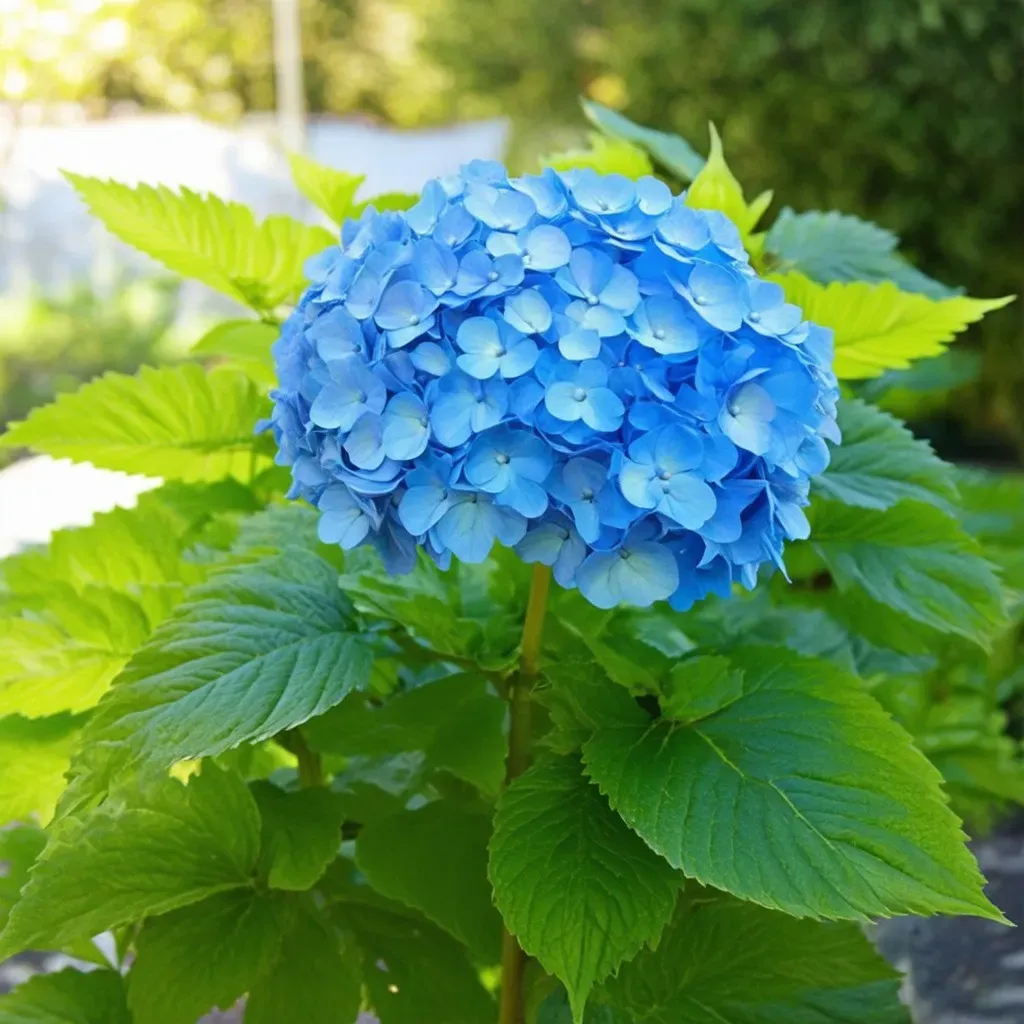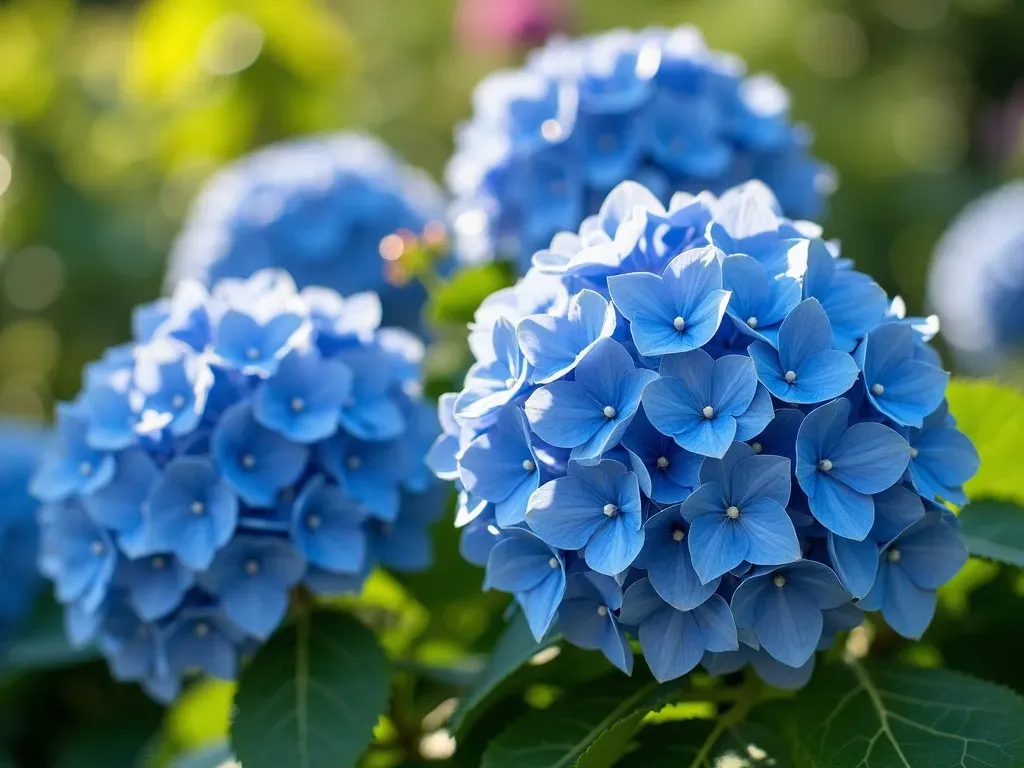When it comes to vibrant gardens, hydrangea-colors-blooms/unlock-the-secret-to-stunning-blue-hydrangeas-a-comprehensive-guide/">blue hydrangeas steal the spotlight. Their stunning colors and shape can transform any garden into a lush paradise. In this comprehensive guide on how to care for blue hydrangeas, we’ll cover everything you need to ensure your plants flourish. Let’s dive into the essential aspects of blue Hydrangea Care, from soil conditions to watering tips!
Understanding Blue Hydrangeas
Blue hydrangeas, particularly the popular hydrangea macrophylla, are cherished for their captivating blue blooms. The hues of the flowers are profoundly affected by soil chemistry, specifically pH levels. Here’s what you need to know:
- Soil pH: To achieve those stunning blue flowers, the soil needs to be acidic, preferably with a pH between 5.2 and 5.5. This can be achieved by incorporating aluminum sulfate into the soil.
- Flowering Season: Blue hydrangeas typically bloom from early summer to early fall and can range in height from 1 to 3 feet.

Essential Care Guidelines
1. Soil Conditions
The foundation of healthy blue hydrangeas lies primarily in the soil. Here’s a step-by-step approach to ensure optimal soil conditions:
-
Fertility: The soil should be rich in organic matter. Incorporating compost or well-rotted manure will enhance soil fertility and health.
-
Drainage: While they require moist soil, proper drainage is crucial. Heavy, waterlogged soil can lead to root rot.
| Soil Requirement | Ideal Condition |
|---|---|
| pH Level | 5.2 to 5.5 (for blue blooms) |
| Fertility | Fertile and well-draining |
| Organic Matter | High; add compost or manure |
2. Watering Practices
Getting the watering regimen right is essential for maintaining the health of your blue hydrangeas:
-
Watering Frequency: Water your hydrangeas deeply once or twice a week during the growing season. During particularly hot weeks, you may need to increase the frequency.
-
Avoid Waterlogging: Make sure that the soil drains well after watering. Overwatering can lead to root diseases.
-
Mulching: An organic mulch layer around the base can help retain moisture and keep roots cool.
3. Sunlight Requirements
Blue hydrangeas prefer partial shade. Ideally, they should receive morning sun and afternoon shade, which protects them from the harsh midday sun that can scorch the leaves.
| Sunlight Requirement | Ideal Duration |
|---|---|
| Morning Sun | Yes (4-6 hours preferred) |
| Afternoon Shade | Important to prevent leaf scorch |
| Direct Sun Exposure | Limited, especially during peak hours |

4. Fertilizing Your Hydrangeas
Proper fertilization promotes vigorous growth and blooming. Here are tips to fertilize your blue hydrangeas effectively:
-
Timing: Fertilize in early spring and again in mid-summer to support the growing season.
-
Type of Fertilizer: Use a slow-release fertilizer modified for acid-loving plants. Look for products specifically designed for hydrangeas.
| Fertilizer Type | Recommended Usage |
|---|---|
| Slow-Release Fertilizer | Apply in spring and mid-summer |
5. Pruning Techniques
Pruning blue hydrangeas is essential for shaping and promoting healthy growth. Here’s how to do it:
-
Timing: The best time to prune is late winter to early spring before new buds appear.
-
Technique: Remove dead or weak stems at ground level, and trim back old blooms to encourage new growth.
6. Pest and Disease Management
Blue hydrangeas can be susceptible to pests like aphids and diseases such as powdery mildew. Here’s how to protect your plants:
-
Pest Management: Monitor for pests regularly. Neem oil or insecticidal soap can address infestations safely.
-
Disease Prevention: Ensure good air circulation around the plants and avoid overhead watering to prevent mildew and fungi.
FAQs about Blue Hydrangeas
Q1: How can I change the color of my hydrangeas from pink to blue?
To change the color from pink to blue, you’ll need to lower the soil pH to below 6.5, typically around 5.5 or lower. Incorporate aluminum sulfate into the soil, and the colors should gradually shift as the plants adjust to the new soil conditions.
Q2: How often should I water my blue hydrangeas?
A consistent watering schedule is crucial. Water once or twice a week, ensuring that the soil remains moist but not soggy. Adjust your watering frequency based on weather conditions, especially during hotter periods.
Q3: Can I grow blue hydrangeas in pots?
Yes! Blue hydrangeas thrive in containers. Ensure that the pot has drainage holes and that you use acidic potting mix. Adjusting the pH in container gardens can be easier and allows you to move them for optimal sunlight.
Q4: What should I do if my hydrangeas aren’t blooming?
Lack of blooms can be caused by several factors: insufficient sunlight, poor drainage, or inappropriate pruning times. Take a close look at your plants to diagnose the problem and adjust care accordingly.

Final Thoughts
Caring for blue hydrangeas can be an incredibly rewarding endeavor that results in vibrant blooms and a flourishing garden. By understanding their specific needs concerning soil pH, watering, sunlight, and nutrition, you can create an environment where these beautiful plants thrive. For more detailed information, check out the guidelines from Proven Winners.
With the right care, your blue hydrangeas will be the envy of the neighborhood, offering stunning floral displays year after year!

